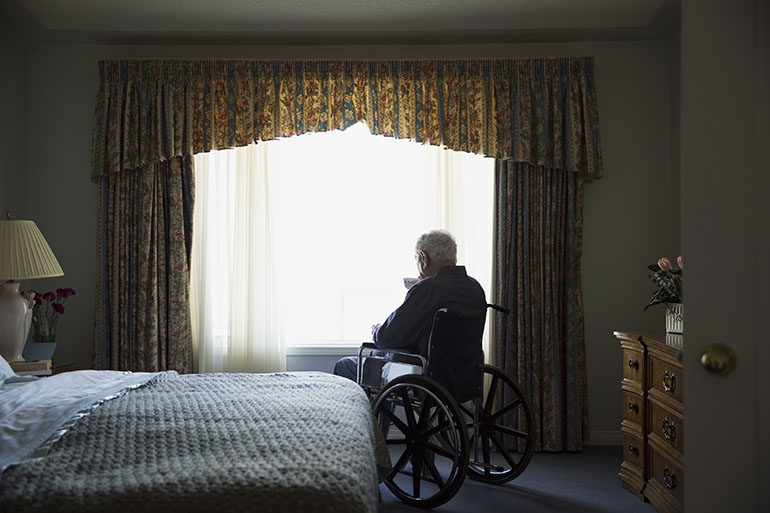In a world where technology is constantly evolving, the question arises: are fall detection devices comfortable to wear? With the increasing need for elderly care solutions, these devices have become crucial for ensuring the safety of our loved ones. But how do they feel when worn for extended periods?
The primary concern for many families and caregivers is whether these devices can be worn comfortably throughout the day. As these devices are becoming a vital part of daily life, it is essential to address their comfort, effectiveness, and ease of use. In this article, we explore the various aspects of fall detection devices, including their design, functionality, and user experience, to provide a comprehensive understanding of their comfort level.

Understanding Fall Detection Devices
The primary purpose of fall detection devices is to monitor and alert caregivers in case of a fall. These devices are often equipped with advanced sensors that detect sudden movements or changes in position, ensuring timely assistance for the wearer. For a deeper understanding of how these devices work, you can visit the Fall Detection without Cameras article.
Design and Comfort
The design of fall detection devices varies widely, from wristbands and pendants to clip-on devices. The comfort of wearing these devices largely depends on their design and materials used. Manufacturers are increasingly focusing on creating ergonomic designs that minimize discomfort and maximize usability.
Materials and Wearability
Most fall detection devices are made from lightweight materials that are gentle on the skin. They are designed to be worn for long periods without causing irritation or discomfort. The choice of materials, such as soft silicone or hypoallergenic plastics, plays a significant role in ensuring comfort.
Functionality and User Experience
While comfort is a priority, the functionality of fall detection devices cannot be overlooked. These devices are equipped with various features, including GPS tracking, emergency alerts, and even connectivity to smartphones. For more insights into how smart technology is transforming daily life, visit the IoT Sensors for Daily Life article.
Ease of Use
Another aspect that contributes to the comfort of wearing fall detection devices is their ease of use. These devices are designed to be user-friendly, with simple controls and intuitive interfaces. This ensures that even those who are not tech-savvy can operate them with ease.
Battery Life and Maintenance
The battery life of fall detection devices is another critical factor. Devices with longer battery life reduce the need for frequent charging, making them more convenient for daily use. Additionally, minimal maintenance requirements ensure that the devices remain functional without causing hassles for the user.
Real-World Feedback
Feedback from users and caregivers provides valuable insights into the comfort and effectiveness of fall detection devices. Many users report feeling more secure knowing that help is just a button press away, while caregivers appreciate the peace of mind these devices provide.
User Testimonials
Testimonials from users often highlight the comfort and reliability of fall detection devices. Many appreciate the lightweight design and the sense of security they offer. To learn more about how technology is transforming independent living, you can read the Smart Elderly Care Solutions article.
Caregiver Insights
Caregivers often express satisfaction with the functionality and ease of use of fall detection devices. They value the quick response time and the ability to monitor their loved ones remotely, which enhances the overall caregiving experience.
Future of Fall Detection Technology
The future of fall detection devices looks promising, with advancements in technology paving the way for more comfortable and efficient solutions. Researchers are continually working on developing devices that offer improved comfort, accuracy, and ease of use.
Innovations in Design
Innovations in design focus on creating devices that blend seamlessly with everyday attire, making them less obtrusive and more appealing to wear. These advancements aim to enhance both the aesthetic and functional aspects of fall detection devices.
Technological Advancements
As technology evolves, fall detection devices are expected to become more sophisticated, with improved sensors and connectivity options. These advancements will likely lead to devices that are even more comfortable and effective in preventing falls.
Conclusion
In conclusion, the question of are fall detection devices comfortable to wear is multifaceted. While comfort is a significant consideration, the functionality and safety features of these devices make them indispensable for many families and caregivers. As technology continues to advance, we can expect even more comfortable and effective solutions in the future.
For more information on fall prevention and safety, you can visit an external resource such as the CDC’s Fall Prevention page.

Frequently Asked Questions
1. How do fall detection devices work?
Fall detection devices use sensors to detect sudden movements or changes in position. When a fall is detected, they send an alert to a caregiver or emergency contact.
2. Can fall detection devices be worn all day?
Yes, most fall detection devices are designed to be worn comfortably throughout the day, thanks to their lightweight materials and ergonomic designs.
3. Are fall detection devices waterproof?
Many fall detection devices are water-resistant, allowing them to be worn during activities like showering or light rain. However, it is essential to check the specifications of each device.
This article contains affiliate links. We may earn a commission at no extra cost to you.






